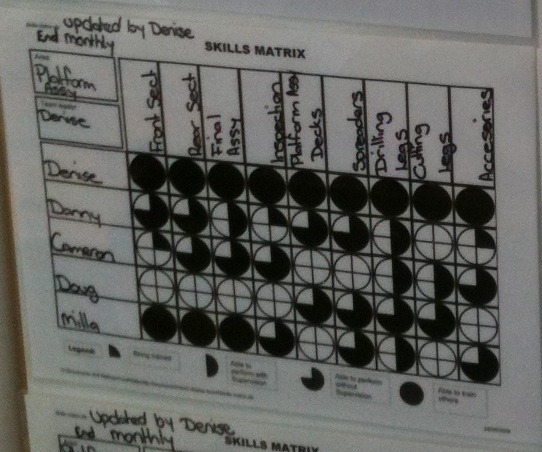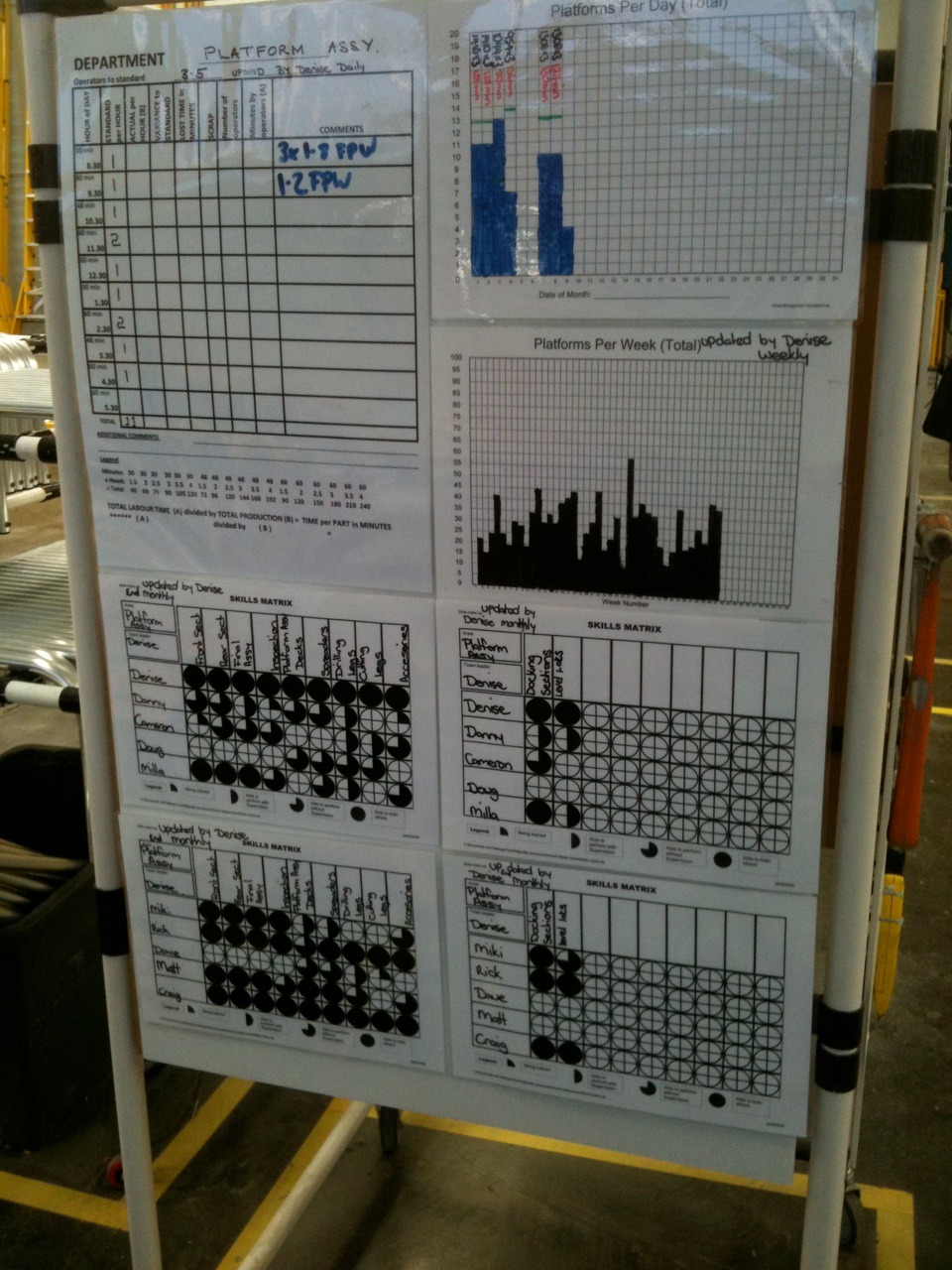Effectively Using a Skills Matrix to Develop Your Team
As we delve into our Lean journey and begin to develop a culture of continuous improvement, the people issues come up pretty quickly. How we identify the skills needed for our standard tasks and how we train our people up in these skills becomes critical as we develop processes and standard ways of working to optimise our efficiencies and workflow. Effectively using a skills matrix is key to developing your people to meet these new challenges. Here we’ll look at what a skills matrix is, why it’s important and how to use a skills matrix to develop our people.

What is a Skills Matrix?
A skills matrix is a visual tool that identifies the key skills needed in each department and then recognises our team members and their level of competency against these skills. A good skills matrix can start the conversation about each person’s confidence with the tasks needed. From here a training plan can be created to cross train your team members, providing job variety and a robust team that can still perform at the same level, even when people are away.
Why is a Skills Matrix Important?
Developing a skill matrix is important as it focuses conversations on how work is completed and the basic skills needed to complete the tasks that contribute to the work in each department. This ties in well with developing standard work. Once the key skills are identified, we can check our current team for their level of competency and use the opportunity to correct any bad habits that have crept in through the “Chinese whispers” method of training, where each person just shows the next person how they do it and it slowly gets modified over time, often losing the critical elements of quality and safety along the way. A skills matrix also helps our new team leaders by clearly indicating who has the skills to carry out a job correctly and whether they are competent to do this unsupervised or if they need assistance. Welcoming new people into a team can be made easier with a skills matrix, as it shows the key tasks completed in the department and gives them an understanding of the way each department works. Plus as new team members are learning new skills, it helps to see that each skill is part of the overall picture. This can reduce frustration and overwhelm by seeing how each smaller part fits into the whole.
Developing a Skills Matrix for Your Team
There are three key steps in developing a skills matrix
1. List Skills or Key Tasks
Preferably with your current team, identify the key skills or tasks need to complete the main range of products made in this department. Of course, we realise that it will depend on a number of factors as to what work is done where, but make the list fairly broad, including the use of key pieces of equipment.
2. Evaluate Your Team Against the 5 Levels
With each person, or as a team if your team is comfortable with this, step through each skill and note the level of competency for each person. None – person hasn’t completed the task or doesn’t need to 1st quarter – being training in skill 2nd quarter – can perform skill with supervision 3rd quarter – able to perform skill without supervision Full – is fully competent and can train others

3. Review with Each Person and Put On Display
If you haven’t completed the skills matrix as a team, now take the time to review your evaluation with each person. Let them tell you how they feel they perform each task. Do they feel they need further training? Would they like more training in one or more areas that they don’t currently work in? Use this discussion to get a feel for how each person is feeling about the team and the work. Depending on your company culture, add your new skills matrix to your Visual Management Board. Making it visible helps remind the team where you are and where you are heading. 
Creating a Training Plan
Once the skills matrix is complete, it is time to develop a training plan to start filling in the gaps. As we all know, training takes time and can reduce process efficiency in the short term while the training is taking place and the new person is getting up to speed with the new skill. I can’t emphasise enough the importance of cross-training our teams. We hear time and time again “we don’t have the time for training” and suddenly someone is sick or leaves and the team efficiency is compromised more that if the time was invested in training before the need was at crisis point.
Invest the Time to Train Your Team
And this may be where you need to change your mindset. If you find yourself thinking “what if I train someone and they leave?” Well, what if you don’t train someone and they STAY?!? Are you prepared to put up with the ongoing efficiency compromises by not training your team? When considering what training is needed, note that not all of your team needs to be fully competent and able to train others.
Having more than one person at each of the top two levels is important but having all of your team at the top level will take time, so a reasonable approach is advised. Once the skills gaps and training needed have been identified, help the team allocate the time for training and make sure everyone is clear on how we check on the level of competency. You may need to refer to quality standards or drawings.
Tap into your Learning and Development department, if you have one. Like any good Lean system, ongoing evaluation and review must be built into the skills matrix process. With a relatively stable workload, an annual review will be adequate. Adding new work into the department, or a great change in job type might need a review within the annual plan.
Related Content
TXM Article: Five Tips for Designing an Organisational Structure That Works




